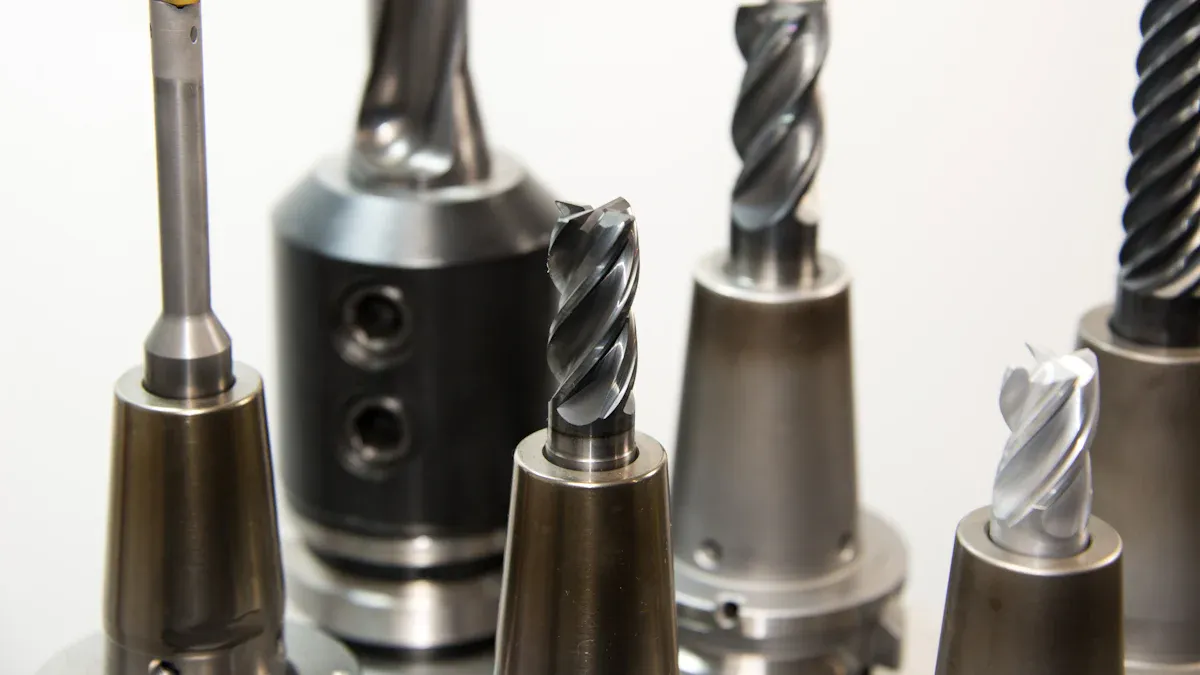
Mold flow analysis ensures precision in manufacturing by identifying potential issues in part design early. This prevents costly modifications during mold building and reduces wasted materials and time. By helping you select the most suitable resin materials, it also improves product performance while cutting expenses. Whether you are molding simple or complex parts, this process enhances efficiency by addressing problems before production starts.
Mold flow analysis is a simulation process that predicts how resin flows through a mold during injection molding. This analysis helps you identify potential issues, such as uneven flow or material shrinkage, before production begins. By simulating the molding process, you can optimize the design of your mold and ensure that the final product meets quality standards.
The primary goal of mold flow analysis is to improve efficiency and reduce costs. It allows you to estimate factors like shrinkage, warpage, and processing conditions. This insight helps you avoid complications during production. Additionally, the analysis determines the mold's life expectancy and overall cost, giving you a clear understanding of long-term benefits.
Tip: Mold flow analysis combines theoretical principles with practical examples, making it a powerful tool for both beginners and experienced manufacturers.
Mold flow analysis plays a critical role in optimizing injection molding processes. It evaluates and enhances product designs to improve manufacturability and performance. Before creating a mold, you can use this analysis to select the best design, saving time and resources.
This process also helps you identify and solve issues in trial molds. For example, it can pinpoint the causes of defects like weld lines or imbalanced flow. By addressing these problems early, you can reduce the number of trial runs needed and streamline production.
The analysis also focuses on key aspects like gate placement and flow balance. Proper gate location ensures even resin distribution, while balanced flow minimizes defects. These improvements lead to higher-quality products and more efficient manufacturing.
| Role/Responsibility | Description |
|---|---|
| Evaluating and Optimizing Product Design | Assessing product designs to enhance manufacturability and performance. |
| Determining the Best Design Before Mold Design | Selecting optimal designs prior to mold creation to streamline the process. |
| Evaluating and Optimizing Existing Design Plans | Reviewing current designs to improve accuracy and efficiency in mold design. |
| Identifying Causes of Trial Mold Issues and Formulating Solutions | Analyzing trial mold problems to develop effective solutions and reduce trial frequency. |
By incorporating mold flow analysis into your injection molding process, you can achieve better results with fewer resources. This approach not only improves product quality but also enhances overall manufacturing efficiency.
Mold flow analysis enables you to tackle the challenges of designing complex injection molded parts with precision. By simulating how materials flow through intricate mold geometries, you can identify potential issues like uneven filling or air traps before production begins. This proactive approach ensures that your designs are optimized for manufacturability and performance.
For example, MOLDNEO used mold flow analysis to compare materials for a complex part. The analysis revealed that switching from nylon to PC+ABS would reduce warpage, improve flatness, and enhance dimensional accuracy. This decision not only maintained part strength but also cut production costs by 20%. Such insights allow you to make informed decisions that save time and resources while delivering high-quality results.
Tip: When working with complex geometries, always use mold flow analysis to evaluate material compatibility and predict potential issues. This step minimizes costly iterations and ensures smoother production.
Defects in injection molded parts can lead to wasted materials, increased costs, and dissatisfied customers. Mold flow analysis helps you prevent these issues by identifying potential defects during the design phase. By simulating material flow, you can predict problems like weld lines, sink marks, or voids and address them before production.
Advanced diagnostic tools further enhance defect prevention. For instance:
| Diagnostic Tool | Purpose | Benefits |
|---|---|---|
| Thermal Imaging | Detects temperature variations to identify cooling issues. | Non-invasive, real-time analysis, easy identification of thermal inconsistencies. |
| X-ray Inspection | Examines internal structures for defects. | High precision, assesses material integrity. |
| Flow Simulation Software | Models material flow to predict defects. | Prevents defects proactively, reduces costly trial-and-error processes. |
In addition, you can ensure part quality by verifying material certifications, inspecting raw materials for contamination, and testing moisture content before processing. These steps, combined with mold flow analysis, result in higher-quality products that meet customer expectations.
Mold flow analysis doesn’t just improve quality—it also accelerates production. By optimizing parameters like cooling time, gate placement, and material flow, you can achieve faster cycle times. Research shows that mold flow analysis can reduce overall cycle time by 10-30%, leading to significant cost savings and efficiency gains.
Shorter cycle times mean you can produce more parts in less time without compromising quality. This is especially beneficial when manufacturing high-volume products or meeting tight deadlines. By streamlining the molding process, you can maximize productivity and stay competitive in the market.
Note: Faster cycle times also reduce wear and tear on molds, extending their lifespan and lowering maintenance costs.
Mold flow analysis helps you save money by reducing material waste and optimizing production processes. By identifying potential issues early, you can avoid costly rework and minimize the amount of raw material used during manufacturing. This approach not only lowers expenses but also supports sustainable practices by reducing waste.
One of the most significant cost-saving benefits comes from early detection of design flaws. When you address these issues before production, you eliminate the need for expensive mold rework. For example:
- Early detection of design problems reduces material waste, saving both time and resources.
- Optimized mold designs and process parameters can cut cycle times by 10-30%.
- A 2-second reduction in cycle time can lead to substantial annual profit increases and energy savings due to lower melt temperatures.
Tip: Even small improvements in cycle time can have a big impact on your bottom line. Use mold flow analysis to identify opportunities for efficiency gains.
Material selection also plays a key role in cost savings. Mold flow analysis allows you to test different materials virtually, helping you choose the most cost-effective option without compromising quality. For instance, you can evaluate how a material flows, cools, and shrinks during the injection process. This insight ensures that you use the right amount of material, reducing waste and improving product consistency.
Additionally, mold flow analysis helps you optimize gate placement and cooling systems. Proper gate placement ensures even material distribution, which minimizes defects and reduces scrap rates. Efficient cooling systems lower energy consumption and shorten cycle times, further contributing to cost savings.
| Cost-Saving Factor | Impact |
|---|---|
| Early Detection of Design Issues | Reduces mold rework and material waste, saving time and money. |
| Optimized Cycle Times | Increases production speed, lowers energy costs, and boosts annual profits. |
| Material Selection | Prevents overuse of raw materials and ensures consistent product quality. |
| Efficient Cooling Systems | Reduces energy consumption and extends mold life. |
By incorporating mold flow analysis into your manufacturing process, you can achieve significant cost savings while maintaining high-quality production. This proactive approach not only benefits your business financially but also helps you meet sustainability goals by minimizing waste.

Injection mold flow analysis relies on advanced simulations to predict how materials behave during the molding process. This simulation helps you identify potential issues and optimize your mold tool design before production begins. The process involves several key steps:
| Step | Description |
|---|---|
| 1 | Optimize mold design by checking the rationality of mold design, including glue inlet size and cooling channel design. |
| 2 | Predict potential problems such as bonding line positions and flow marks. |
| 3 | Improve production efficiency by determining optimal injection parameters. |
| 4 | Reduce costs by minimizing the number of mold trials and production time. |
To ensure accurate results, you should always use the most up-to-date model revision. Include runner geometry and cooling designs in your model, and use the same mold material for cores and cavities. These steps ensure that the simulation reflects real-world conditions, helping you achieve better results.
Tip: Always verify your model's accuracy before running a filling analysis. This step saves time and ensures reliable predictions.
Several tools and software packages are available to perform injection mold flow analysis. Each has unique strengths and weaknesses, so choosing the right one depends on your specific needs. For example, MGS Mfg. Group evaluated three commercial simulation packages by simulating the same parts. They found that each software had distinct advantages, such as different meshing styles and processing capabilities.
Here’s a breakdown of some key considerations:
1. Not all tests may be performed, which can lead to inaccuracies in results.
2. Using nodes to represent gate locations may misrepresent flow paths, affecting predictions.
3. Accurate modeling requires a complete melt delivery system to avoid skewed pressure loss predictions.
MGS ultimately selected Sigmasoft for in-depth reviews and Autodesk Moldflow Advisers for initial screenings. This combination allowed them to balance detailed analysis with quick evaluations. When choosing software, consider your hardware capabilities, as processing demands can vary significantly.
Note: Investing in high-performance hardware can improve simulation speed and accuracy, especially for complex filling analysis tasks.
Injection mold flow analysis examines several critical parameters to ensure optimal performance. These parameters include:
By analyzing these parameters, you can optimize your mold tool design and improve product quality. For example, warpage analysis helps you predict how materials will shrink and deform during cooling. This insight allows you to adjust your design and avoid costly rework.
Tip: Regularly review simulation results to identify trends and refine your process. This proactive approach ensures consistent quality and efficiency.

Mold flow analysis has revolutionized the automotive industry by improving part designs and manufacturing processes. You can use this tool to identify issues like hot spots on parts, which allows for better heat extraction. For example:
- Mold flow simulation helped redesign components, reducing maximum temperatures from 193°F to 85°F.
- Conformal cooling techniques, guided by mold flow analysis, cut cycle times by nearly 50%.
These advancements enhance production efficiency and ensure that automotive parts meet strict performance standards. By optimizing gate placement and cooling systems, you can produce high-quality components faster and at a lower cost.
In consumer goods manufacturing, mold flow analysis plays a vital role in meeting the demand for innovative and customized products. This tool helps you improve the moldability of parts, determine optimal gate placement, and identify potential issues like gas trapping.
| Application Area | Description |
|---|---|
| Consumer Goods | Diverse end-user industry with a wide range of applications and product offerings. |
| Demand for Customization | Increased reliance on industrial molds due to evolving consumer preferences for innovative products. |
| Aesthetic Appeal | Ability to produce intricate designs, vibrant colors, and unique textures in consumer goods. |
For example, you can use mold flow analysis to create intricate designs with vibrant colors and unique textures. This ensures that your products not only perform well but also appeal to consumers visually. By addressing potential defects early, you can reduce waste and improve production efficiency.
The medical industry relies on precision and consistency, making mold flow analysis an essential tool. You can use it to detect potential defects before mold creation, ensuring high-quality production. This process also helps you optimize material selection, balancing functionality and manufacturability.
For instance, mold flow analysis allows you to evaluate material performance, ensuring that medical devices meet strict regulatory standards. By improving process control, you can achieve sustainable manufacturing practices, reducing waste and energy consumption. This not only benefits your bottom line but also aligns with global sustainability goals.
Mold flow analysis empowers you to enhance manufacturing processes by identifying and solving potential issues early. This proactive approach ensures higher efficiency, reduced costs, and consistent product quality. By adopting this technique, you can stay competitive in today’s demanding market. It also supports sustainable practices by minimizing waste and optimizing material use. Whether you produce automotive parts, consumer goods, or medical devices, this tool helps you meet precision manufacturing standards while improving profitability.
Mold flow analysis helps you predict and solve potential issues in injection molding. It ensures better product quality, reduces defects, and optimizes production efficiency. By simulating the molding process, you can save time and resources while improving overall manufacturing outcomes.
Yes! Mold flow analysis minimizes material waste, shortens cycle times, and prevents costly rework. By identifying design flaws early, you avoid unnecessary expenses. It also helps you choose cost-effective materials and optimize processes, leading to significant savings.
Absolutely! Mold flow analysis benefits industries like automotive, consumer goods, and medical devices. It ensures precision and quality in any manufacturing process that uses injection molding. Whether you produce simple or complex parts, this tool enhances efficiency and performance.
Popular tools include Autodesk Moldflow, Sigmasoft, and Moldex3D. Each software offers unique features for simulating material flow, cooling, and pressure. Choosing the right tool depends on your project needs and hardware capabilities.
It identifies potential defects like weld lines, voids, or warpage before production. By addressing these issues early, you ensure consistent quality. It also optimizes gate placement and cooling systems, resulting in durable and precise products that meet customer expectations.
Tip: Regularly review simulation results to refine your designs and maintain high-quality standards.